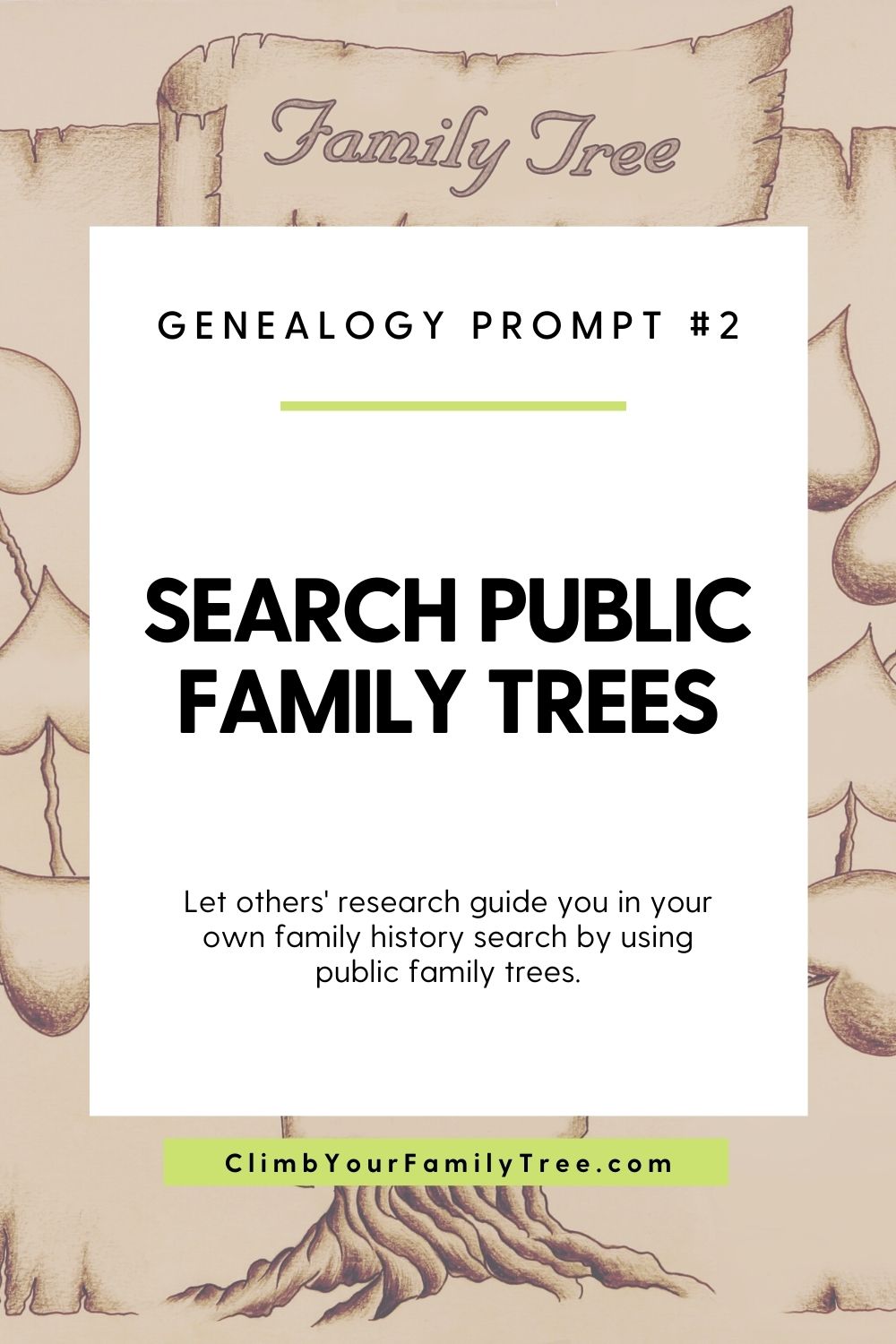
In our last post in the new series of weekly genealogy prompts, I suggested beginning your family history research by reaching out to a relative. But what if you don’t have anyone to reach out to? Or what if you did, but they didn’t have much information to share? A good next step is browsing public family trees.
Let’s look at how others’ shared family trees can help you in your research, and where you can find them.
What are Public Family Trees?
Public family trees are basically family trees others have shared online.
In other words, someone else already did some research and shared their family’s information. What you do is look for overlap between those trees and your own known ancestors.
It’s important to note that public family tree databases generally don’t share information about living persons. So you’ll want to look back to earlier generations to find those matches.
What Can You learn from Public Family Trees?
When you find one of your ancestors in someone else’s family tree, there’s a lot you might learn. For example, you could discover their:
- parents’ names;
- birthplace;
- birth date;
- death date and location;
- marriage date and location;
- siblings;
- children;
- photos;
- immigration details;
- and much more.
Basically, anything someone else already learned about your ancestor might be tied to that other family tree.
When you find your ancestor in others’ trees, make sure you dig into the details as much as possible, including reviewing any images or documents that might be attached or cited. It could point you to more official records you’ll need for deeper research.
Where Can You Find Family Tree Databases?
If you’re wondering where you can look for information on your ancestors in others’ family trees, two popular options to start with are:
- Ancestry.com (premium)
- FamilySearch.org (free)
With Ancestry’s site, you can use their “hints” to automatically find crossovers between your tree and others in their database. FamilySearch.org only requires a free account, but then you’ll be able to search trees in their collection. They also offer their own version of record hints.
Why You Should be Cautious with Public Family Tree Databases
While public family trees can lead you to a treasure trove of information, you should know that information isn’t always accurate.
Those trees can include family stories passed down that aren’t full accounts. They can include lazy research, like confusing records for two people with similar names in similar locations. And sometimes you just can’t be sure one way or another.
You can’t even automatically trust information just because you find the same details in multiple trees. Why? The tree owners might have simply imported each others’ data in their own searches without verifying things.
My personal policy is to import information from others’ family trees into a private working version of my own. Then I work my way through that information and verify what I can before moving anything to my own public family tree.
So when you find something like parents’ names, take that as a hint of sorts, not assumed truth. Then seek out documentation to prove the information is accurate before moving on. Otherwise you risk falling down a bad research rabbit hole where you let someone else’s bad research lead you to waste time looking into people who aren’t even members of your family.
Should You Make Your Own Family Tree Public?
If you manage your family tree on a website, you’ll likely have an opportunity to make your own family tree publicly searchable. But should you?
This depends largely on how serious you are about your own genealogy research. You don’t want to become part of the problem by spreading bad information to other researchers. So before sharing your tree publicly, ask yourself the following questions:
- Have I verified the facts included in my tree?
- Have I documented facts clearly so other researchers can verify my data?
- Does my family tree hide or protect information about living persons?
If you’ve answered “yes” to all three questions, your family tree might be a good candidate for public sharing.
Whenever you feel stuck, browsing others’ family trees can be helpful. It’s not a one-time task, but something to do on an ongoing basis because other family history researchers are continually adding new information to their own trees.
Even if you can’t find new information about a target relative, you can use public family trees to help you research another branch of your family. The amount of data these public collections put in your hands is massive. So just remember to be careful about verifying what you find before you share it with others.
